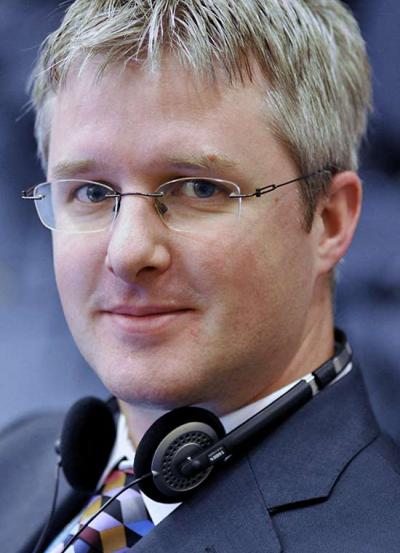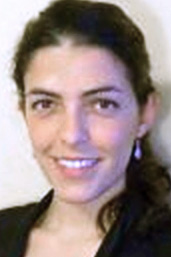

Domain Names |
Sponsored by |

|
 With ever more TLDs, where does it make sense to focus resources? After four years and a quadrupling of internet extensions, what metrics continue to make sense in the domain name industry? Which should we discard? And how do you gain understanding of this expanded market? For registries, future success is dependent on grasping the changes that have already come. For registrars, it is increasingly important to identify winners and allocate resources accordingly. The question is: how?
With ever more TLDs, where does it make sense to focus resources? After four years and a quadrupling of internet extensions, what metrics continue to make sense in the domain name industry? Which should we discard? And how do you gain understanding of this expanded market? For registries, future success is dependent on grasping the changes that have already come. For registrars, it is increasingly important to identify winners and allocate resources accordingly. The question is: how?
 The Uniform Domain Name Dispute Resolution Policy (UDRP) is not an exclusive remedy for cybersquatting, but it is by far the preferred forum. Direct actions in courts of competent jurisdiction, the Anticybersquatting Consumer Protection Act (ACPA) in the U.S. are minimal in comparison, and it is rare for respondents to remove disputes to a court of competent jurisdiction before a UDRP decision (paragraph 4(k) of the Policy). Less rare (but not copious) are post-UDRP challenges under the ACPA.
The Uniform Domain Name Dispute Resolution Policy (UDRP) is not an exclusive remedy for cybersquatting, but it is by far the preferred forum. Direct actions in courts of competent jurisdiction, the Anticybersquatting Consumer Protection Act (ACPA) in the U.S. are minimal in comparison, and it is rare for respondents to remove disputes to a court of competent jurisdiction before a UDRP decision (paragraph 4(k) of the Policy). Less rare (but not copious) are post-UDRP challenges under the ACPA.
 The Uniform Domain Name Dispute Resolution Policy (UDRP) is known as an inexpensive alternative to litigation (and that's true), but some proceedings can end up costing a trademark owner more than it may have expected. There are generally two additional types of expenses that can arise during the course of a UDRP proceeding: (1) extra filing fees for certain aspects of a case filed at the Forum, and (2) an increased filing fee if the domain name registrant wants a three-member panel to decide the case.
The Uniform Domain Name Dispute Resolution Policy (UDRP) is known as an inexpensive alternative to litigation (and that's true), but some proceedings can end up costing a trademark owner more than it may have expected. There are generally two additional types of expenses that can arise during the course of a UDRP proceeding: (1) extra filing fees for certain aspects of a case filed at the Forum, and (2) an increased filing fee if the domain name registrant wants a three-member panel to decide the case.
 Over the past couple of weeks, following the events in Charlottesville, Virginia, there has been significant discussion in social and traditional media about various technology companies removing websites from their servers, or otherwise making them unavailable. As the operators of Canada's Internet domain, we at CIRA are getting numerous inquiries about our stance and policies on this issue. I'd like to use this opportunity to make a couple of clarifications about how CIRA works and what CIRA actually does.
Over the past couple of weeks, following the events in Charlottesville, Virginia, there has been significant discussion in social and traditional media about various technology companies removing websites from their servers, or otherwise making them unavailable. As the operators of Canada's Internet domain, we at CIRA are getting numerous inquiries about our stance and policies on this issue. I'd like to use this opportunity to make a couple of clarifications about how CIRA works and what CIRA actually does.
 ICANN's last new gTLD application closed in 2012 with more than 600 brands applying for their dot brand. Dot brand domains associate a keyword or keyphrase and a brand name in a complete domain name... To understand better how the evolution of the dotBrand has been throughout these years, number of websites launched, redirects, registries etc, Dot Brand Observatory prepared a few visual graphics.
ICANN's last new gTLD application closed in 2012 with more than 600 brands applying for their dot brand. Dot brand domains associate a keyword or keyphrase and a brand name in a complete domain name... To understand better how the evolution of the dotBrand has been throughout these years, number of websites launched, redirects, registries etc, Dot Brand Observatory prepared a few visual graphics.
 Despite the launch of more than 1,200 new generic top-level domains (gTLDs) in recent years, .com remains - far and away - the top-level domain that appears most frequently in decisions under the Uniform Domain Name Dispute Resolution Policy (UDRP). But, some new gTLDs are attracting more disputes, including .site, which has become the new gTLD that, so far this year, has appeared in the most UDRP decisions. The rise of .site represents a change from last year, when .xyz was the most-often disputed new gTLD.
Despite the launch of more than 1,200 new generic top-level domains (gTLDs) in recent years, .com remains - far and away - the top-level domain that appears most frequently in decisions under the Uniform Domain Name Dispute Resolution Policy (UDRP). But, some new gTLDs are attracting more disputes, including .site, which has become the new gTLD that, so far this year, has appeared in the most UDRP decisions. The rise of .site represents a change from last year, when .xyz was the most-often disputed new gTLD.
 There were only 1.8 million registered .com names when I joined the NSI (Network Solutions) Marketing Team in the summer of 1998. ICANN was formed just a few months later. By the time we were acquired by Verisign in June of 2000 there were roughly 14 million names in the .com database. I recall predictions that one day there would be 100 million registered .com names. Some thought that was a craaaazy number and wanted to know what we were smoking.
There were only 1.8 million registered .com names when I joined the NSI (Network Solutions) Marketing Team in the summer of 1998. ICANN was formed just a few months later. By the time we were acquired by Verisign in June of 2000 there were roughly 14 million names in the .com database. I recall predictions that one day there would be 100 million registered .com names. Some thought that was a craaaazy number and wanted to know what we were smoking.
 Failing to block a stealthy malicious host from making connections to your network could cost your company millions of dollars, a damaged reputation, and severe losses in sensitive private data. Threat intel teams have faced on-going problems: Expensive feeds that are slow to catch new threats; Chasing false positives in alerts wastes time and money; and Vendors selling a new appliance for every ill. Would 100% of your users Spot the Bot?
Failing to block a stealthy malicious host from making connections to your network could cost your company millions of dollars, a damaged reputation, and severe losses in sensitive private data. Threat intel teams have faced on-going problems: Expensive feeds that are slow to catch new threats; Chasing false positives in alerts wastes time and money; and Vendors selling a new appliance for every ill. Would 100% of your users Spot the Bot?
 After its first edition in Valencia, Brands and Domains will travel this time to the Netherlands where the second conference will take place from the 2nd to 3rd of October 2017. This time, Dot Stories, the main organizer, chose the Hotel Amrath Kurhaus for the event. Nowadays, more than 600 applicants hold already the right to start their own dot brand, but there are not so many who have been brave enough to use it.
After its first edition in Valencia, Brands and Domains will travel this time to the Netherlands where the second conference will take place from the 2nd to 3rd of October 2017. This time, Dot Stories, the main organizer, chose the Hotel Amrath Kurhaus for the event. Nowadays, more than 600 applicants hold already the right to start their own dot brand, but there are not so many who have been brave enough to use it.
 At their best, UDRP panelists are educators. They inform us about the ways in which parties win or lose on their claims and defenses. What to do and not do. In addressing this issue, I'm referring to less than 10% of cybersquatting disputes. For 90% or more of filed complaints, respondents have no defensible answer and generally don't even bother to respond. But within the 10%, there are serious disputes of contested rights (contested even where respondent has defaulted).
At their best, UDRP panelists are educators. They inform us about the ways in which parties win or lose on their claims and defenses. What to do and not do. In addressing this issue, I'm referring to less than 10% of cybersquatting disputes. For 90% or more of filed complaints, respondents have no defensible answer and generally don't even bother to respond. But within the 10%, there are serious disputes of contested rights (contested even where respondent has defaulted).